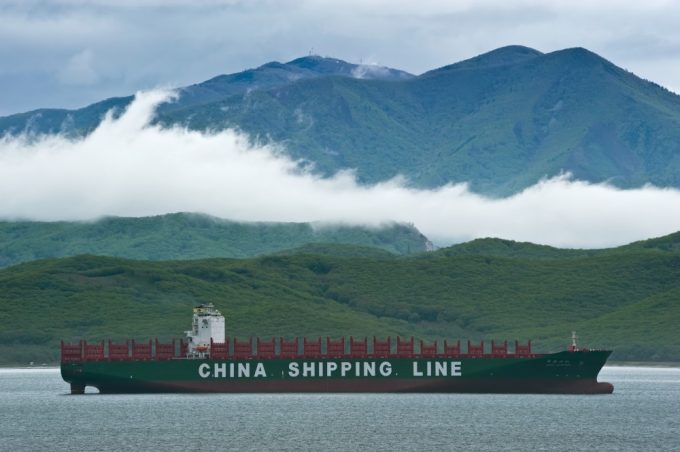Grim outlook for liner shipping, as a continued weak market pushes carriers to the brink

© Vladimir Serebryanskiy |
By Mike Wackett
The shock waves from the collapse of a top-20 container line such as Hyundai Merchant Marine (HMM) could be the catalyst for a change in carrier behaviour, according to Drewry.In a Q&A session following the shipping consultant’s Container Freight Rates & Shipping Market Outlook webinar today, container research director Neil Dekker said if HMM were to fail, it “could prompt other players to change their business plans” and, “hopefully, they might change some of their commercial practices”.
The presentation by Mr Dekker, with Drewry director colleagues supply chain advisor Philip Damas and head of research products Martin Dixon, was almost entirely negative on the immediate prospects for container liner shipping, painting a very bleak picture for investors.
According to the analysts, an estimated global demand growth of just 2.1% this year and 2.9% in 2017, against a forecasted cellular capacity increase of 8.4% this year and 4.2% next, was guaranteed to keep ocean freight rates under pressure and cause more financial stress for carriers.
The “trigger point” for distressed carriers was not too many months away, believes Mr Dekker, and although attention is focused on HMM presently, the South Korean container line would not, in his opinion, be the only carrier to hit trouble.
Mr Dekker said even Maersk Line, with its market-leading lower unit costs, would not be able to escape the full impact of the historically low rates on its bottom line.
“We expect all the carriers to report very weak Q1 financials,” he said. Drewry said the rate war of the final quarter of 2015 had continued at a pace, with the result that global spot rates were a massive 47% down year-on-year in the first quarter.
Contract rates, which carriers had been able to fall back on to in the past to keep their top line revenue healthier, had also come under severe pressure in the first three months of this year, tracking down 20% on the same quarter of 2015.
In fact, conditions will worsen when the full effect of the 1 May transpacific rate negotiations now being finalised is factored into the data later in the year, said Drewry.
With further evidence of how dysfunctional the Asia-North Europe trade has become, Mr Damas said many backhaul rates were now higher than headhaul prices – “abnormal market behaviour”.
On the outlook for alliances, both Mr Dekker and Mr Damas agreed that the G6 grouping was looking especially weak, given the expected takeover of APL by CMA CGM and the potential demise of HMM.
The analysts also thought that the CKYHE alliance was threatened by the merger of the two Chinese carriers, Cosco and CSCL, with the new entity reportedly joining with CMA CGM to form a new mega-allaince.
The impact of the alliance shake-up could result in just three groups dominating east-west trades, said Drewry, leaving weaker players with nowhere to go.

No comments:
Post a Comment